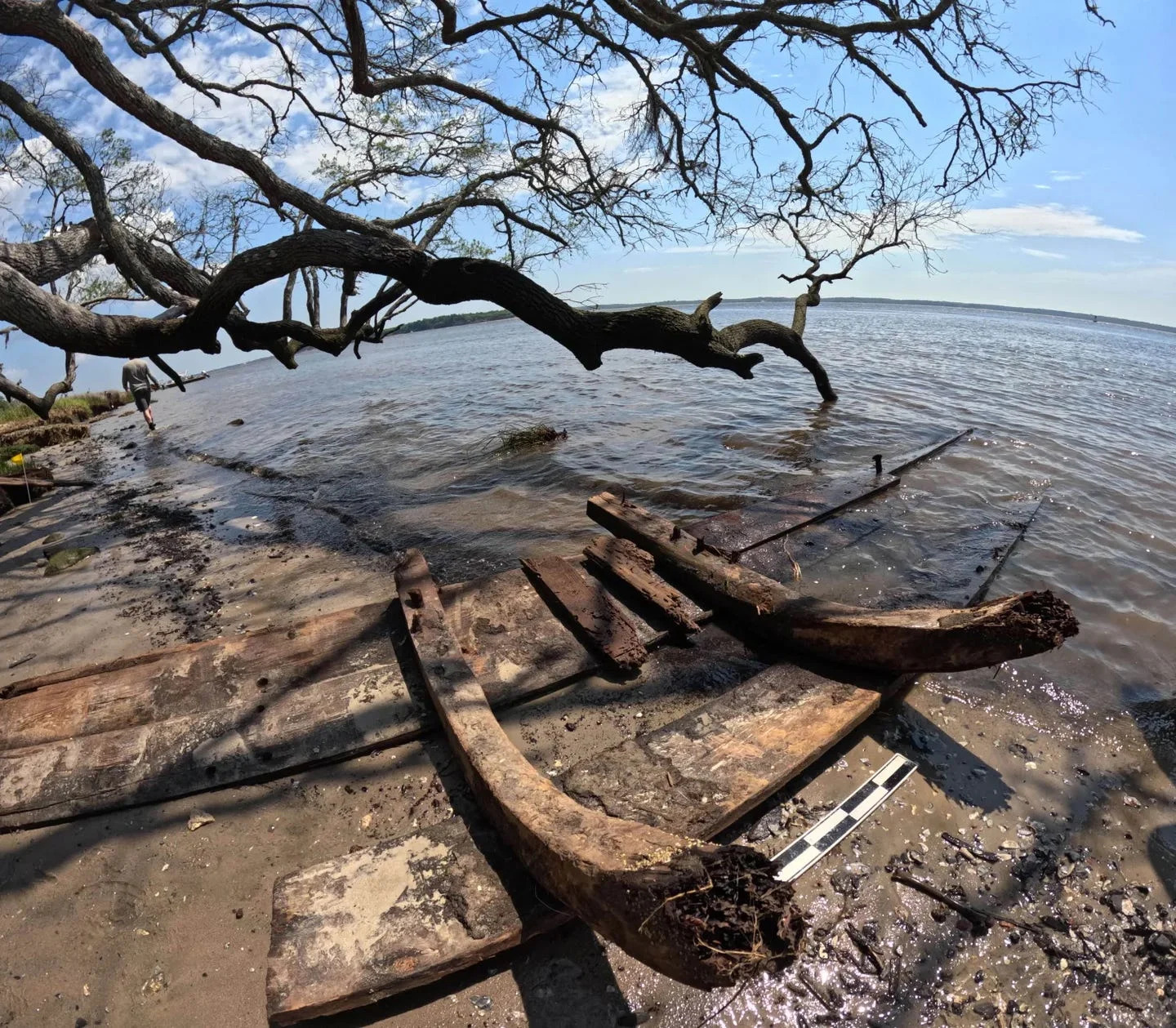Here’s what you’ll learn when you read this story:
-
Research at Brunswick Town/Fort Anderson State Historic Site (BTFA) in Brunswick County, North Carolina revealed a Spanish colonial shipwreck.
-
Researchers believe the ship to be La Fortuna—a Spanish privateer ship that exploded during an attack at the end of King George’s War.
-
Further exploration at the site uncovered three additional shipwrecks and countless artifacts.
At Brunswick Town/Fort Anderson State Historic Site (BTFA) in North Carolina, two East Carolina University (ECU) graduate students were working on a field project in the Cape Fear River when they discovered something incredible.
“While lost, in the search for the Northern extent of the wharf, I came across several wooden frames barely sticking out of the clay mud with evidence of planking just barely visible on the surface,” Cory van Hees, one of the students on the project, said in a press release. “I didn’t understand what I was looking at in that moment, but I knew I should relay the wooden structure to faculty.”
Soon after the discovery, project co-leader and ECU maritime archaeologist Jason Raupp confirmed that the strange planks were in fact a shipwreck. Further research suggested that the vessel was once La Fortuna—a colonial Spanish privateer ship that exploded during an attack at the end of King George’s War in 1748.
Samples from the planks identified the wood as either Monterey cypress (H. macrocarpa) or Mexican cypress (H. lusitanica), which only grow in California and Central America, meaning that the ship’s builders sourced the materials from 18th-century Spanish Caribbean colonies. The only recorded Spanish shipwreck in the area is La Fortuna, and previous research in the area discovered a cannon from the ship nearby.
Excitingly, La Fortuna wasn’t the only wreck the ECU team discovered at the site—divers actually came across three more. Researchers believe one of the additional wrecks was once a vessel used for land reclamation, and another was a colonial flatboat, which was a vessel used to transport people. The fourth wreck remains unidentified, though researchers believe it’s unlikely that the three wrecks (other than La Fortuna) are of Spanish origin.
The team also discovered many artifacts at the site, including “ceramic sherds, glass container bottles, clay tobacco pipes, a cooper’s adze [cutting tool], barrel heads and staves, sailcloth, leather shoes, possible clothing fragments, and butchered animal bone,” Jeremy Borrelli—another project co-leader and ECU archaeologist—told Live Science in an email. According to the press release, the relics provide greater context for colonial life, trade, maritime activity, and conflict. One of the finds—a collection of fragments of 18th-century Spanish-American ceramics—further supports the hypothesis that the initial wreck was once La Fortuna.
Unfortunately, environmental concerns put the wrecks (and other undiscovered remains) at risk—dredging, dynamic wave energy, and large storms have all put BTFA’s waterfront at risk. For La Fortuna specifically, erosion drastically impacted the wreck site, scattering the ship’s remains across the surrounding area. The team undertook emergency recovery of over 40 timbers from what researchers believe to be La Fortuna, according to the press release, and all of the pieces recovered from the shipwreck were transferred to a laboratory at ECU’s West Research Campus in Greenville. Research will continue on the wrecks and their remains.
“We are extremely excited about these important sites,” Raupp said in the release, “as each one will help us to better understand the role of BTFA as one of [North Carolina’s] earliest colonial port towns.”
You Might Also Like
Yahoo News – Latest News & Headlines
Read the full article .


